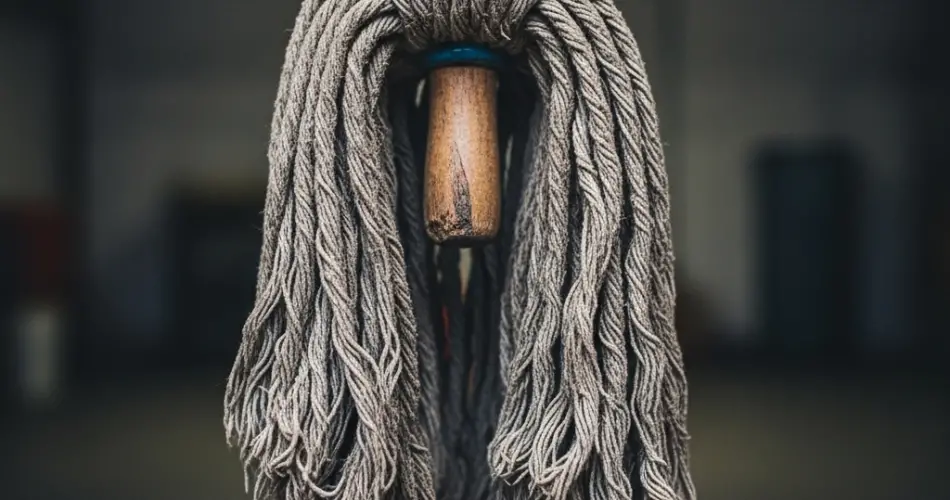Before you toss out that worn-out mop, think again. What may seem like trash can become a practical and eco-friendly resource for your plants. In urban gardening and home horticulture, recycling and creative thinking are key to making the most of available materials—and old mops are no exception.
This article will show you how to reuse old mop heads to benefit your plants, conserve water, improve soil quality, and even reduce waste in the garden or balcony orchard.
Why Repurpose an Old Mop?
Mop heads—especially cotton ones—are designed to absorb and retain moisture. This very characteristic makes them incredibly useful in the garden. By reusing them, you:
-
Reduce plastic and textile waste
-
Improve soil moisture retention
-
Support plant roots in dry weather
-
Enhance sustainable gardening practices
With a little creativity and some basic tools, you can give your mop a second life that benefits your plants for months to come.
1. Moisture Retention in Pots and Planters
One of the most useful applications of old mop fibers is as a moisture-retaining layer at the bottom of plant pots. Before adding soil, place pieces of the mop head at the base of the pot. This helps:
-
Retain water longer, reducing the frequency of watering
-
Prevent soil compaction
-
Improve drainage by avoiding water stagnation while still keeping roots moist
This technique is especially helpful for indoor plants or container gardens exposed to heat and sunlight.
2. DIY Self-Watering System
If you travel frequently or forget to water your plants, an old mop can be transformed into a wick irrigation system. Here’s how:
-
Cut strips from the mop head.
-
Place one end in a water-filled container and the other into the plant’s soil.
-
The cotton will act as a wick, slowly drawing water from the container to the roots.
This simple system provides continuous hydration for your plants with minimal effort and no electricity.
3. Mulching Alternative
Mulch helps retain soil moisture, regulate temperature, and suppress weed growth. While most people use bark, straw, or compost, mop fibers (especially those made of cotton or microfiber) can be used as an alternative.
Spread clean, dry mop strands around the base of your plants. They will act as a soft mulch, especially effective for delicate herbs, strawberries, or seedlings.
Important: Ensure the mop has been thoroughly washed and contains no chemical residues before using it in your garden.
4. Seedling Support and Tie Material
The soft texture of mop threads makes them ideal for tying young stems to support stakes without damaging the plant. Cut thin strips from the mop head and use them as biodegradable plant ties for tomatoes, beans, cucumbers, or any vine plant.
They’re flexible, gentle on the stem, and more sustainable than plastic ties.
5. Compost Additive
If the mop is 100% natural fiber (like cotton), and has not been treated with harsh chemicals, it can be shredded and added to your compost pile. The material breaks down slowly, adding carbon (a “brown” element) to balance nitrogen-rich food scraps and green waste.
Tip: Cut the mop into small pieces to speed up decomposition.
6. Hanging Planters and Soil Holders
With some basic DIY skills, you can use an old mop head to line hanging baskets or construct soil holders for vertical gardens. The absorbent material helps retain moisture and gives roots a soft environment to grow.
This is particularly useful for balconies or small patios where space is limited, and vertical gardening solutions are needed.
7. Floor Mop as Plant Pole Support
If the mop is still attached to a pole, consider reusing the entire piece as a plant support. Tall or vining plants like beans, morning glories, or even climbing roses can benefit from an upright structure to grow on.
Secure the mop firmly into the ground or a large pot and gently train your plants to climb the pole. As the plant grows, the mop fibers may also help support the vines.
Safety and Hygiene Notes
Before using an old mop in the garden:
-
Thoroughly clean and disinfect it, especially if it was previously used with chemical cleaners.
-
Dry it completely before applying it to the soil to avoid mold or fungal growth.
-
Avoid synthetic mop heads for composting, as they may not break down naturally.
Conclusion
Reusing an old mop might seem unconventional, but it offers multiple benefits for the home gardener. From water-saving systems and mulch substitutes to seedling supports and vertical garden tools, mop heads can provide surprising advantages when repurposed creatively.
So the next time you’re about to throw out a mop, think twice. Your garden may thank you with better growth, healthier plants, and more sustainable practices—all while helping reduce waste at home.



